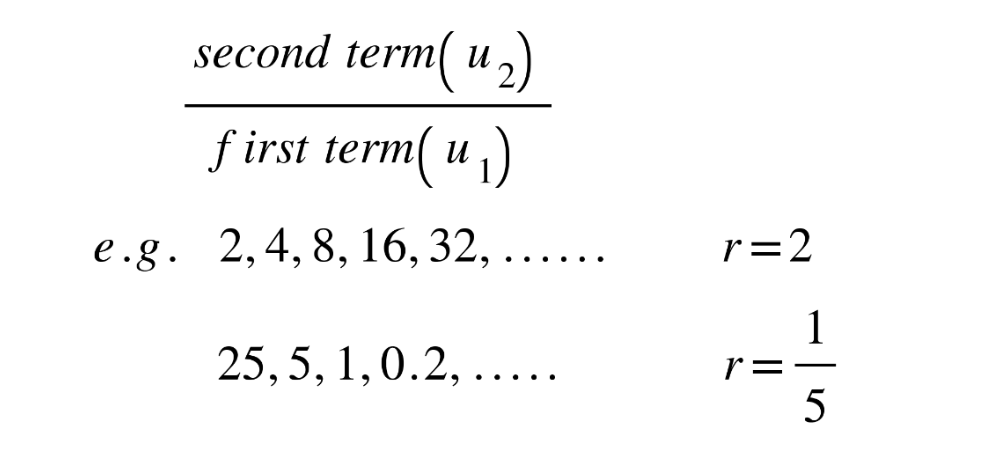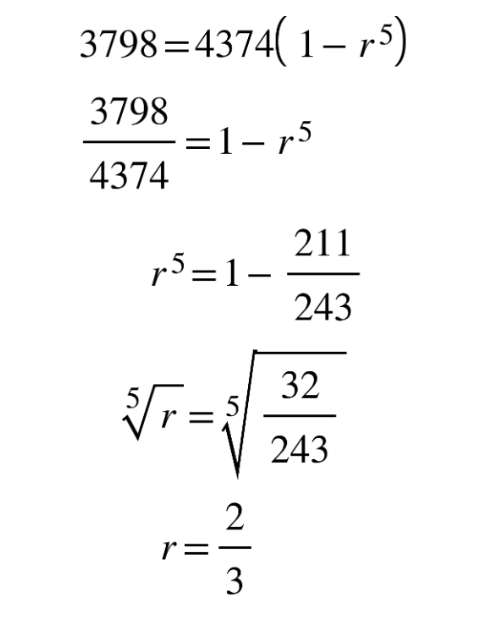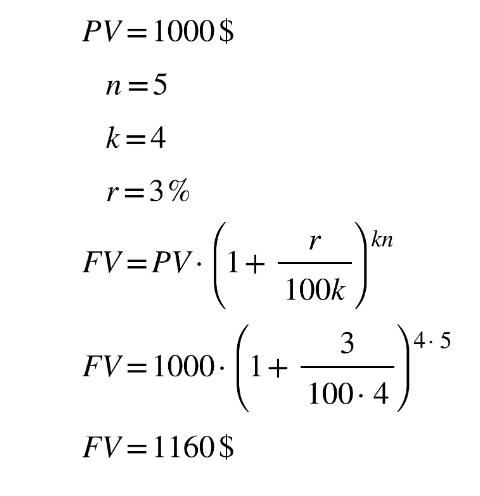1.1.1 Arithmetic sequence

Often the IB requires you to first find the 1st term and/or common difference.
In an arithmetic sequence u10 = 37 and u22 = 1. Find the common difference and the first term.
- Put numbers in to nth term formula
37 = u1 + 9d
1 = u1 + 21d
2. Equate formulas to find d
21d −1=9d −37
12d = −36
d = −3
3. Use d to find u1
1 − 21 · (−3) = u1
u1 = 64
1.1.2 Geometric sequence
Geometric sequence the next term is the previous number multiplied by the common ratio (r).
To find the common ratio, divide any term of an arithmetic sequence by the term that precedes it, i.e.

DB 1.3 & 1.8 Use the following equations to calculate the nth term, the sum of n terms or the sum to infinity when −1 < r < 1.

Similar to questions on Arithmetic sequences, you are often required to find the 1st term and/or common ratio first.
1.1.3 Sigma notation
Sigma notation is a way to represent the summation of any sequence — this means that it can be used for both arithmetic or geometric series. The notation shows you the formula that generates terms of a sequence and the upper and lower limits of the terms that you want to add up in this sequence.


- Interpret the question
The sum of the first 5 terms of a geometric sequence is 3798 and the sum to infinity is 4374. Find the sum of the first 7 terms
2. Use formula for sum of n terms

3. Use formula for sum to infinity

4. Rearrange 3. for u1
4374(1 − r ) = u1
5. Substitute in to 2.

6. Solve for r

7. Use r to find u1

8. Find sum of first 7 terms

1.1.4 Compound interest
Sequences can be applied to many real life situations. One of those applications is calculating the interest of a loan or a deposit. Compound interest specifically deals with interest that is applied on top of previously calculated interest. For example, if you make a deposit in a bank and reinvest the interest you will gain even more interest next time. This happens because interest is calculated not just from your initial sum, but also including your re-investments.
DB 1.4

Where:
FV – is the future value,
PV – is the present value,
n – is number of years,
k – is the number of compounding periods per year,
r% – is the nominal annual rate of interest
Example: A deposit of 1000$ was made in a bank with annual interest of 3% that is compounded quarterly. Calculate the balance in 5 years.
We can use our compound interest equation. Let’s identify the known variables.

